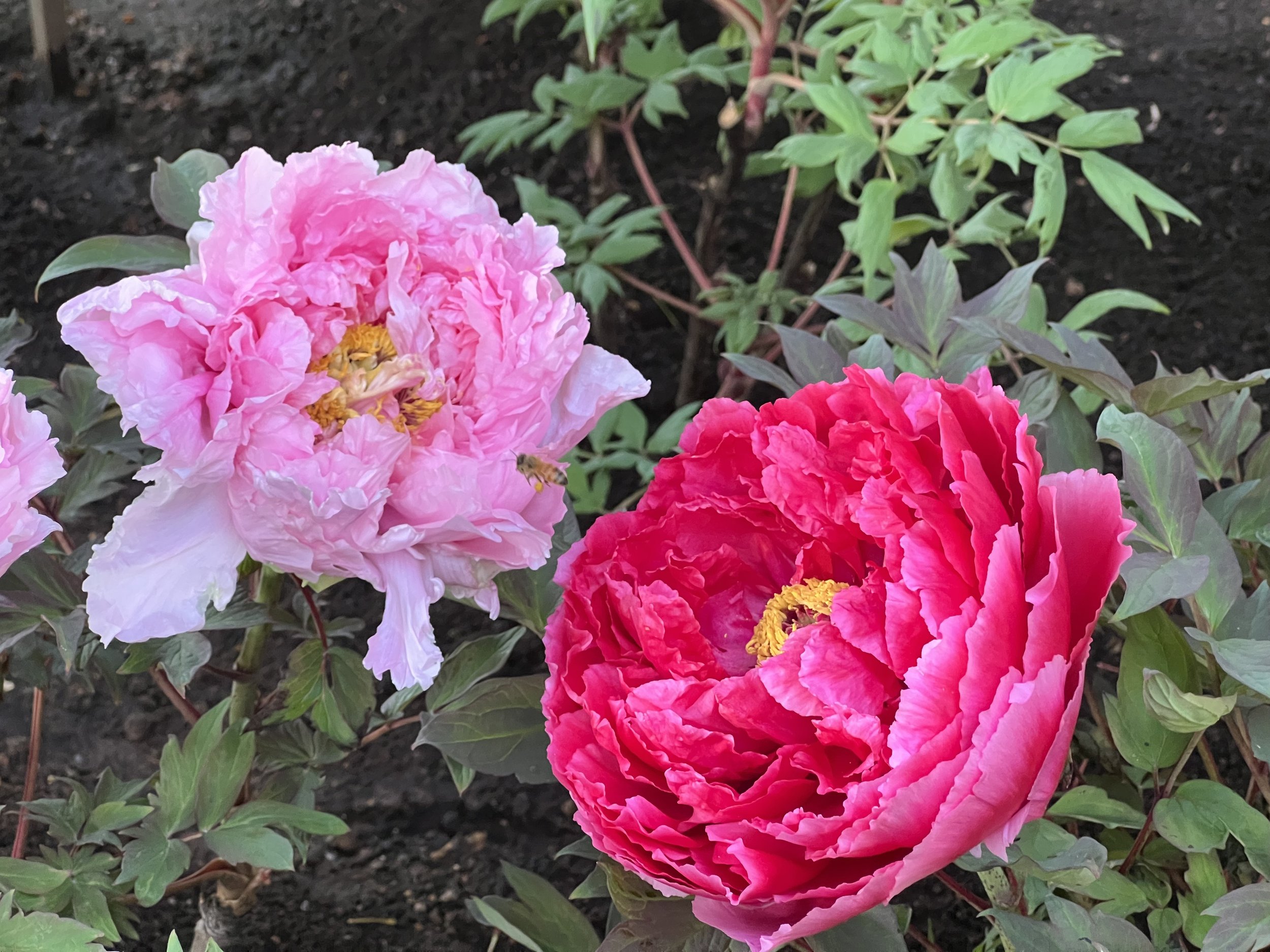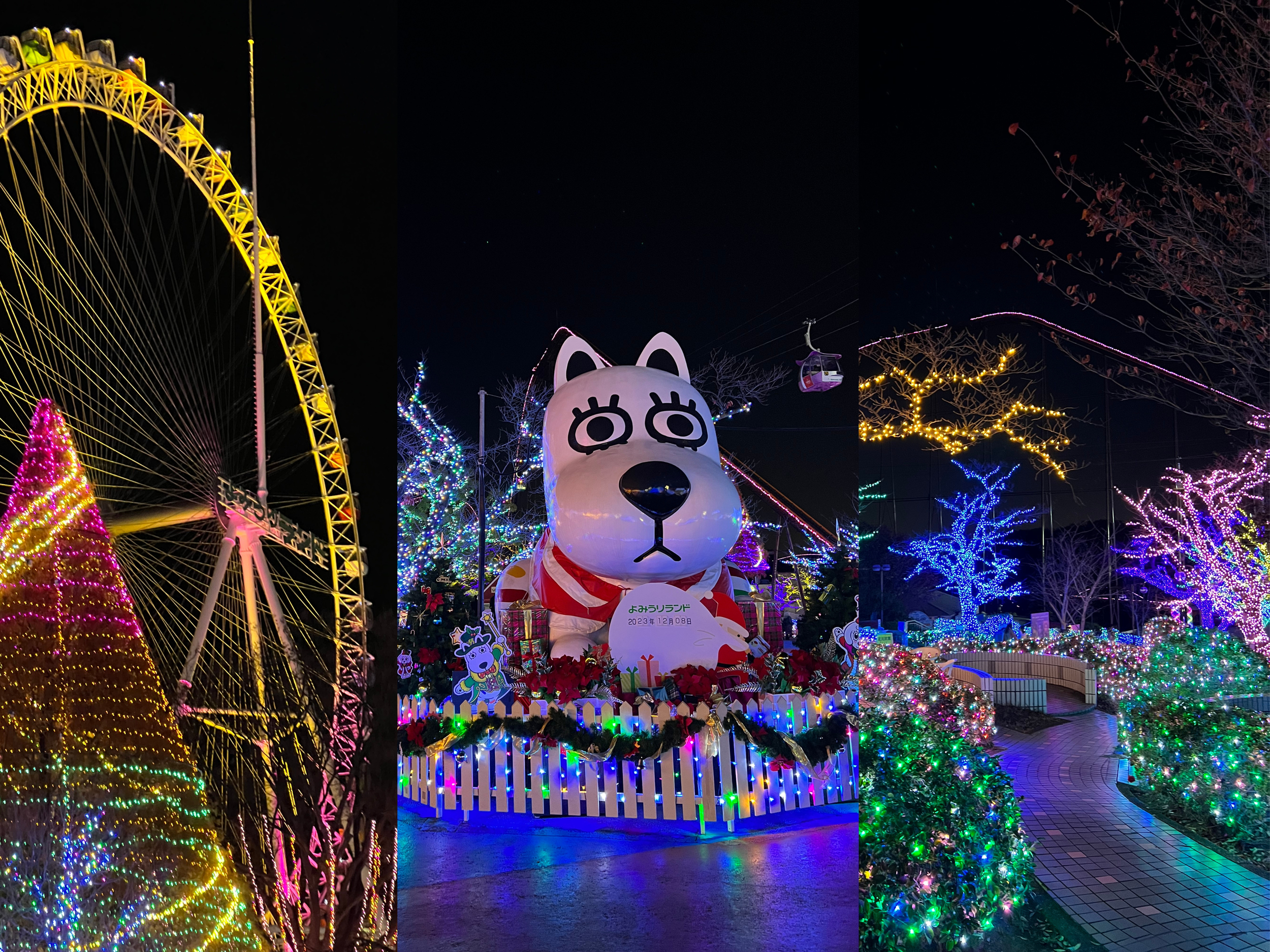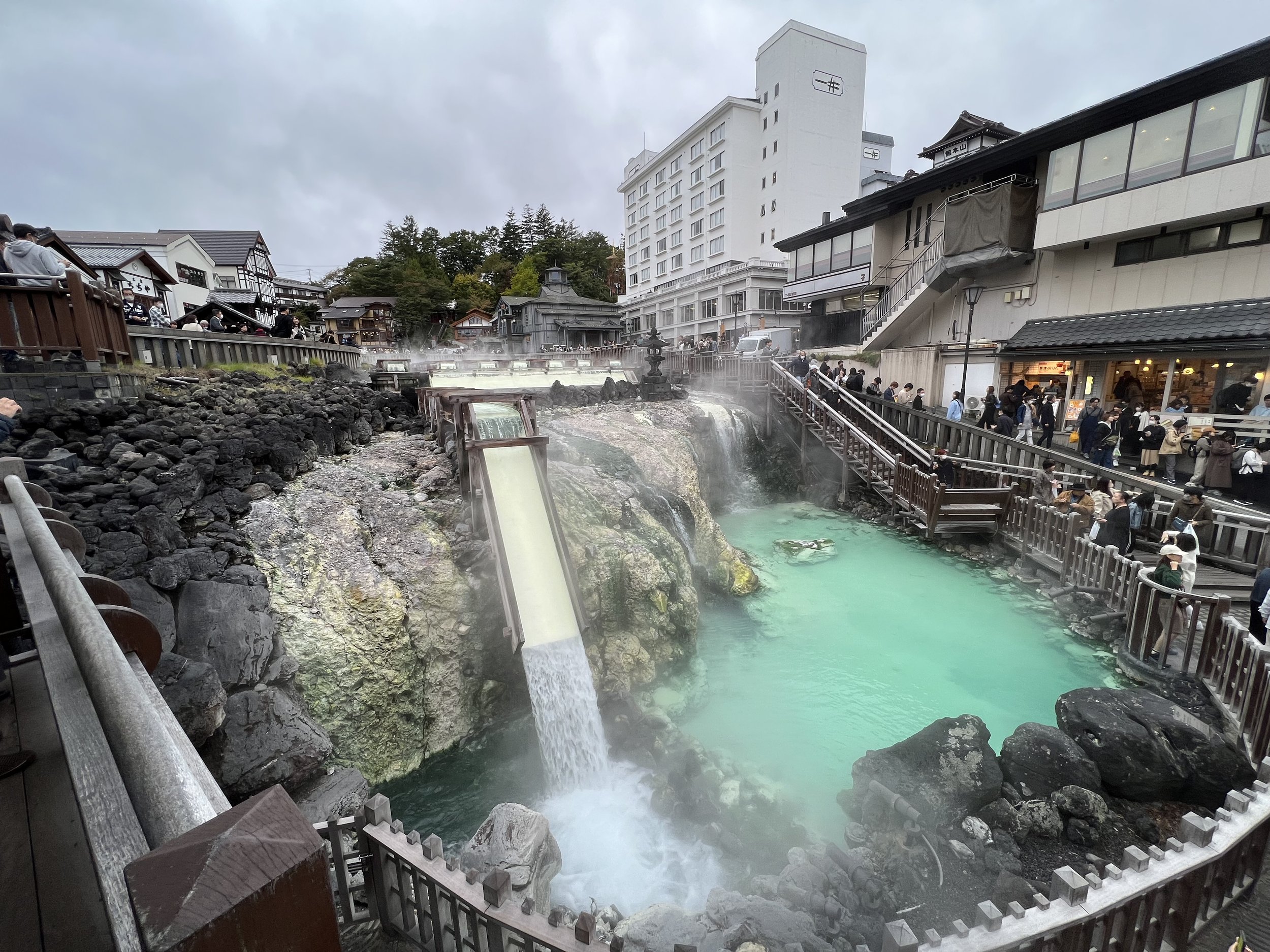Kusatsu Onsen Guide: Top Things to Do and Perfect 2-Day Itinerary
Nestled in the scenic mountains of Gunma Prefecture, Kusatsu Onsen (草津温泉) is celebrated as one of Japan’s best hot spring towns. From the iconic Yubatake hot water field to relaxing open-air baths and the unique Yumomi water-cooling performance, Kusatsu Onsen is an unforgettable getaway for onsen lovers.
I spent two days exploring Kusatsu and am happy to share with you this Kusatsu Onsen guide and two-day itinerary suggestion to make the most of your visit to this wonderful onsen town.
Why Visit Kusatsu Onsen?
Kusatsu Onsen is one of Japan’s most famous hot spring towns, known for its sulfuric waters, which are believed to have health benefits because of its powerful anti-bacterial properties. With the largest natural flow of hot spring water in the country—over 32,000 liters per minute—it has been a top onsen destination for centuries. The water, sourced from the nearby active volcano Mt. Shirane, is highly acidic and recognized as some of the best in Japan. In fact, I was amazed to learn that a 1-yen aluminum coin would completely dissolve in just a week.
Kusatsu’s reputation grew internationally thanks to German doctor Erwin von Baelz, who worked in Japan in the late 19th century and praised the waters for their therapeutic properties. Visitors can enjoy strolling through the charming streets, seeing the Yubatake hot spring field at the town center, and watching the traditional Yumomi performance, where locals stir and cool the hot water with wooden paddles. It’s an ideal destination for anyone looking to relax and experience Japan’s onsen culture.
How to Get to Kusatsu Onsen
Reaching Kusatsu Onsen is easy with multiple transportation options from Tokyo and other major cities in Japan.
1. By Train and Bus:
If you’re going on a weekend, you can take the JR Limited Express Kusatsu from Ueno Station in Tokyo directly to Naganohara-Kusatsuguchi Station (around 2.5 hours). From there, hop on a local bus to Kusatsu Onsen, which takes about 25 minutes.
Alternatively, other routes are to take the Hokuriku Shinkansen to Karuizawa and then a bus bound for Kusatsu Onsen from the North Exit platform 2. You can also use the Joetsu Shinkansen to Takasaki Station, then transfer to the Agatsuma Line for Naganohara-Kusatsuguchi. Personally I used the Karuizawa option, stayed overnight to Karuizawa (another beautiful destination I can’t wait to write about) and took a bus to Kusatsu Onsen on the next day. You can find the bus timetable here.
2. By Highway Bus:
The Keio Dentetsu Bus offers a direct route from Shibuya Station in Tokyo to Kusatsu Onsen Bus Terminal. This budget-friendly option takes approximately 4 hours. You can book your ticket on highwaybus.com.
3. By Car:
For those driving, Kusatsu Onsen is about a 3.5-hour trip from central Tokyo via the Kanetsu Expressway.
✨ TRAVELY TIP: After the long trip to Kusatsu or before embarking on the return journey, don’t miss out the foot bath (called ashiyu, 足湯) that is just outside the bus terminal station.
8 Best Things to Do in Kusatsu Onsen
1/ Admire the Yubatake by Day and Night
The Yubatake (湯畑), which means “Hot Water Field," is the symbol of Kusatsu Onsen and its most iconic landmark. Located at the center of town, it’s the main source of Kusatsu’s famous sulfuric hot spring water. The Yubatake channels steaming water through a series of wooden chutes (made of fine quality pinewood or Japanese cypress to withstand the acidity), cooling it naturally before it is distributed to the surrounding onsen facilities. You can walk around the Yubatake on wooden pathways, take in the picturesque scenery, and relax at another foot bath, that can be used for free.
Yubatake offers a completely different atmosphere when illuminated at night. So I highly recommend taking a stroll through Yubatake during daytime and nightime.
2/ Experience Yumomi Performances
Don’t miss the Yumomi show at Netsunoyu (熱乃湯), a traditional performance unique to Kusatsu Onsen, showcasing a centuries-old method of cooling hot spring water. The water in Kusatsu is naturally too hot for bathing, so Yumomi was developed to lower its temperature without diluting its mineral content. During the show, the artists perform traditional dance and then use large wooden paddles to stir the water rhythmically while singing folk songs.
Yumomi performances are held 6 times per day at 9:30am, 10am, 10:30am, 3:30pm, 4pm and 4:30pm. Admission cost ¥700 for adults. You can purchase tickets 30 minutes before each show time at the ticket window. I’d recommend getting there early as people start lining up around then as well, and being toward the front of the line will give you better choice of your seat.
3/ Soak in Public Onsens
Day-use onsen facilities in Kusatsu include the Sainokawara Rotemburo (西の河原露天風呂), featuring spacious outdoor pools surrounded by nature in Sainokawara Park; Otakinoyu (大滝乃湯), known for its Awaseyu baths with multiple wooden tubs offering different water temperatures (from 38 to 46 degrees); and Gozanoyu (御座之湯), a charming wooden bathhouse near the Yubatake, housing traditional bathing areas and a relaxation room.
✨ TRAVELY TIP: You can purchase a combo ticket (called Choina Sanyumeguri) at the first public bath you visit for all three of them. It will save you a few hundred yen, and you will receive after completing a visit to all three a special certificate (image below), making a nice souvenir of your onsen adventure in Kusatsu.
I’d recommend visiting all three of them as they each have their own atmosphere. But if you’d like to go to only one, then my favorite of the three was Otakinoyu.
In addition to these larger facilities, Kusatsu has 19 small community bathhouses scattered throughout the town. While most are reserved for local residents, three—Shirohatanoyu, Jizonoyu, and Chiyonoyu—welcome visitors. These bathhouses are free to use and provide intimate, gender-separated pools that accommodate just 2-4 people, offering a chance to experience Kusatsu's famously hot waters like a local.
4/ Explore Sainokawara Park by Night
Sainokawara Park (西の河原公園) is a picturesque park with scenic walking paths in a forested valley. You can enjoy the free foot bath in the park, or go to the large outdoor onsen. Visit in the evening to see the park beautifully illuminated, with steam from the sulfuric hot spring streams adding to the magical ambience.
5/ Visit Kusatsu Onsen’s Temples and Shrines
If you’re a shrine and temple lover like myself, you’ll want to visit the different little shrines and temples of Kusatsu Onsen. Don’t miss Kosenji Temple (光泉寺) and its 5 story pagoda. The temple stands atop stone steps beside the main town square center of Kusatsu.
I also quite enjoyed visiting Shirane Shrine (白根神社), with its pretty hanachozu (a traditional form of floral art). The shrine is dedicated to Yamato Takeru, a legendary prince who is said to have discovered Kusatsu Onsen. The shrine is a bit apart from the rest of the town on a hill that overlooks Kusatsu. One way to access it is from the steep stone stairs on Yudaki Dori but there is also another path that starts next to Kirishimaya Ryokan.
6/ Stroll the Charming Streets of Kusatsu Onsen
Exploring the streets of Kusatsu Onsen is a great way to soak in the town’s traditional atmosphere.
As you wander the narrow lanes around Yubatake, such as Yutaki Dori and Sainokawara Dori streets, you’ll come across beautifully preserved ryokan, souvenir shops selling handcrafted goods and local delicacies, and picturesque spots perfect for photos.
The streets are particularly lively in the evenings, when the town is softly lit, adding to the nostalgic ambiance.
7/ Stop at Cute Stores and Shop for Souvenirs
As mentioned above, Kusatsu Onsen is home to a variety of charming shops where you can find the perfect souvenir to remember your trip. Popular items include locally made onsen manju, a sweet steamed bun filled with red bean paste, and skincare products crafted with Kusatsu’s mineral-rich hot spring water. Personally, I treated myself to an onsen towel and Kusatsu onsen bath salts and brought back omiyage for family and friends, including onsen manju and local craft beer. And for Ghibli fans, know that there is also a Donguri store, one of Studio Ghibli's official merchandise stores, in Kusatsu Onsen!
8/ Sample Onsen and Local Food
Snack sampling in Japan is one of my favorite as I love trying local specialties. One of the must-try treats is onsen manju, steamed buns filled with sweet red bean paste, are another popular choice, often enjoyed warm while strolling through the town. I also enjoyed tasting Kusatsu Onsen purin, a delicious vanilla-based pudding made of local and regional ingredients such as Haruna milk from Gunma prefecture.
During my visit, I also had tasty veggie miso ramen at Yugawa Terrasse Restaurant (was perfect to warm myself after a long walk outside in the cold). There is actually a foot bath outside which you can enjoy while having your meal!
All My Recommendations in a Map
Recommended 2-Day Itinerary to Make the Most of Your Kusatsu Onsen Trip
♨️ Day 1
Travel to Kusatsu Onsen in the morning, enjoy first foot bath and lunch before check-in to your hotel
Admire Yubatake, visit Kosenji Temple and enjoy a first stroll through Kusatsu Onsen
After sunset, head to Sainokawara park and have a relaxing bath in the outdoor Sainokawara Rotemburo
Enjoy an evening stroll in town and admire Yubatake again at night
🍵 Day 2
(Optional) For early risers, enjoy a first onsen at the ryokan you’re staying at or at one of the free public bathhouses
Attend the 9:30 Yumomi Performance at Netsunoyu
Enjoy another moment of relaxation at Gozanoyu
Visit Shirane Shrine
Head to Otakinoyu to complete your journey using the 3-onsen pass
Travel back to Tokyo or another destination
Where to Stay in Kusatsu Onsen
Kusatsu Onsen offers a wide range of accommodations, catering to all budgets and preferences, from modern hotels with extensive amenities to charming traditional ryokan.
During my visit, I stayed at Kirishimaya Ryokan, a cozy and welcoming ryokan that combines traditional charm with excellent hospitality. Located in a quiet area, it offers comfortable tatami rooms, tasty breakfast, and a small hot spring bath. I found that it had a great value for everything it offered.
Looking for more accommodation options in Kusatsu Onsen? If I were to stay again and try a new place, based on reviews, I would recommend:
For a luxurious experience, Kusatsu Onsen Kanemidori, combining spacious and modern rooms with convenient amenities and several soothing onsen baths, or Kusatsu Onsen Boun, for the premium ryokan experience.
For another budget-friendly option, 326 Yamanoyu Hotel, with simple but comfy rooms, breakfast and its own small onsen for one of the best value for the money in Kusatsu.
Travel Tips to Enjoy Your Time in Kusatsu Onsen
1/ Best Time to Visit: Kusatsu Onsen is charming year-round, but the best times to visit are during autumn for vibrant foliage or winter when the snow creates a magical contrast with the steaming hot springs.
2/ Getting Around: Kusatsu is a compact town, so it’s easy to explore on foot. Bring comfortable shoes for walking between attractions like the Yubatake, Sainokawara Park, and the various bathhouses.
3/ Stay Warm in the Cold: Kusatsu gets chilly in the winter, so dress in layers and bring a warm coat, scarf, and gloves to stay comfortable while exploring. Covering yourself in Japanese heat packs, also known as kairo (カイロ), is also an option!
4/ Always Carry an Onsen Towel: Bring a small towel with you for onsen visits—it’s convenient for drying off and can be purchased as a souvenir in the town.
5/ Onsen Etiquette: Before entering the baths, make sure to wash and rinse yourself thoroughly at the washing area. Towels should be kept out of the water, and remember to enjoy the experience quietly and respectfully.
6/ Other Things to Do Around: in winter, Kusatsu Onsen is also known for its small ski resort, located on the slopes of Mount Shirane above the town. A day of winter sports, followed by a soothing hot spring bath and a hot curry must be close to heaven (I haven't had a chance to ski in Japan yet, but it's on my bucket list).
To Conclude
Kusatsu Onsen is the perfect destination for a relaxing two-day or weekend getaway, offering a chance to immerse yourself in Japan’s rich onsen culture while enjoying its traditional and nostalgic atmosphere. My visit to Kusatsu was truly memorable—I loved exploring the town, hopping between its unique hot springs, and indulging in delicious local specialties. Will you add Kusatsu Onsen to your Japan bucket list?
Looking for more recommendations around Japan? You can check all my Japan blog articles, or my list of Japan articles related to onsen or winter recommendations.
Found this article helpful? Buy me a coffee. 😊
Want to stay in touch? Subscribe to my monthly newsletter (with latest articles, updates, travel tips and more...) delivered straight to your inbox. 📩
Some of the links in this Kusatsu Onsen Guide and Itinerary are affiliate links. At no extra cost to you, I may earn a small commission when you click on them and make a purchase. And if you do, thanks for your support! Purchasing through these links is a great way to support Travely Notes, as this helps with the costs of running my blog.




























